di I.A.

“Tremors and turmoil, spirits, traces, parallel readings and re-readings all constitute new perspectives at the heart of the 2024 edition of the Rencontres d’Arles. Photographers, artists and curators reveal their visions and stories, not least that of our humanity, in turn frustrated, endlessly redefining, resilient, but also visionary. Whether at the margins or established in the centre, the narratives lead to divergent and multiple paths, all emanating from the faults of a porous surface: they intertwine, overlap and overlap. It is an exciting moment, as this ensemble opens up a plurality of routes to follow.”
With these words, Christoph Wiesner, Artistic Director of the Recontres d’Arles, announces the concept of the exhibitions chosen for the rich 2024 exhibition programme of the most famous photography festival in the World, now in its 55th edition and entitled Under the Surface.
During the opening week of the Recontres d’Arles, which this year was attended by no less than 20,000 visitors, 41 exhibitions, including 10 in the Arles Associés programme and 10 Grand Arles Express exhibitions, 27 exhibition venues including many historical and cultural spaces in the city of Arles, and many events dedicated to the evenings of photography, the publishing practices of the Arles Book Fair and famous prizes such as Madame Figaro, Women in motion for photography, Discovery Prize Louis Roederer Foundation, Luma Recontres Dummy Book Award, I was able to observe and appreciate several photographic exhibitions. Of these, five in particular, which I have chosen to illustrate in this article, literally captured my interest.
De nombreuses formes étranges et belles nagent dans les eaux nocturnes.
J’hésite à les partager avec d’autres plongeuses le jour….
(Izumi Shikibu, 11th century)
Enchanting and immersive is the Ama exhibition by Uraguchi Kusukazu (Shima 1922-1988), curated by Sonia Voss, installed in one of the ancient halls of the marvellous Abbey of Montmajour, which explores the world of women of the sea (the Ama in fact) and is composed of a series of images unearthed from the Japanese artist’s archive unexplored since 1988, the year of his death. The photographic work comes to life in Shima, Japan, the author’s homeland, along the northern coast of the Pacific Ocean, where Uraguchi Kusukazu, since the mid-1950s and for over thirty years, has explored and narrated, through black and white film, the story of Japanese underwater women fishermen who gather pearls, crustaceans and seaweed underwater, the sale of which can guarantee their economic autonomy within their family unit.
In the exhibition, an extraordinary archive of vintage photographic prints illustrates beautiful portraits and underwater views, permeated by a gaze full of admiration, that of Uraguchi, which recounts and documents the shores and coastlines of Japan and investigates the sensual and spiritual bond that they have with the water, freediving women fishermen who plunge into the depths of the sea without oxygen tanks or diving equipment and who float gently in the ocean like mermaids guarding the treasures of the sea, thus telling the story of one of Japan’s most fascinating traditions practised for over 3000 years.
Kusukazu, with his photographic memory, leaves us with an important and sensitive visual documentation of one of the oldest and most bewitching Japanese customs, anchored in Shinto rituals, now in danger of extinction.
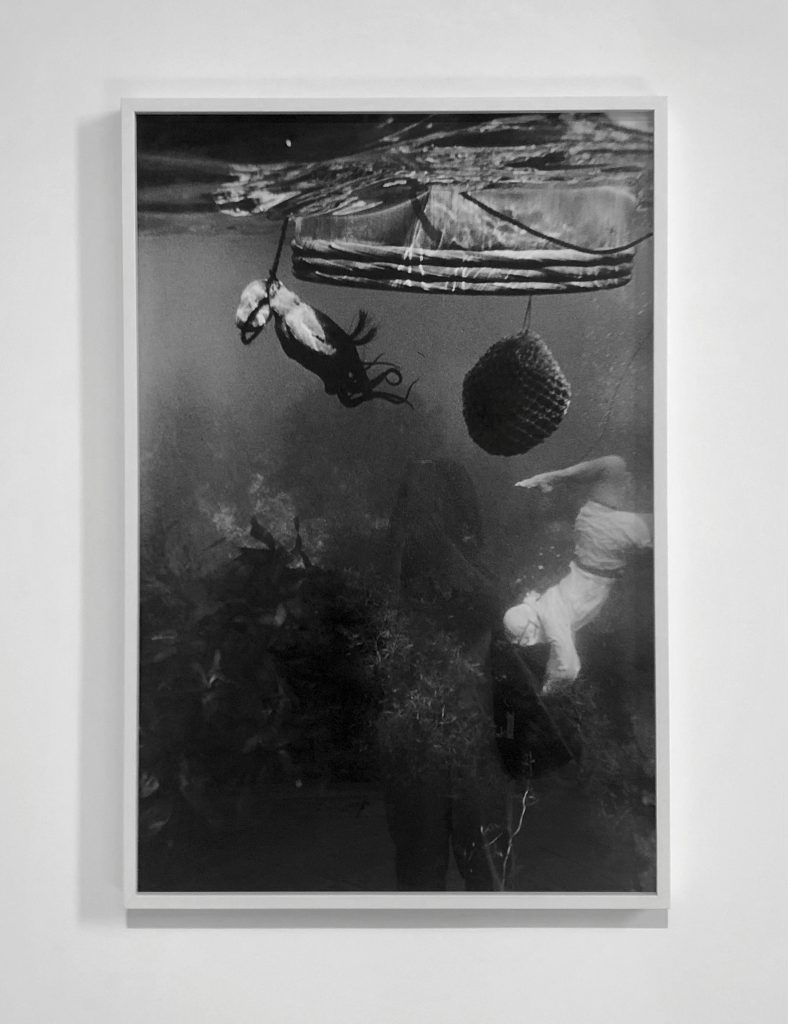
The first floor of the Chapelle Saint Martin Du Mèjan hosts the beautiful exhibition Rivers Ocean. The Colour Landscape of the Missisipi by French photographer Nicolas Floc’h (Rennes, 1970), who describes his research as follows: ‘The more I document and read the colours of the waters, the more the information they contain multiplies and organises itself as a writing of life, minerals, soils, space, climate. The most common underwater and oceanic landscape forms a colourful expanse as far as the eye can see.’ For the Recontres d’Arles, Floc’h is proposing an art installation documenting the flow of water (beneath the surface) of river basins, from the Mississippi to the Rhone, from the Loire to the Seine, conceptually mapping, with a series of colour photographic prints, the pigments of water in a landscape of hues that originates from no less than 224 places he has explored in 31 watershed states of the Mississippi. The images, composed of minerals, atmospheric, organic and natural elements, interpret a series of visible and invisible traces that, emerging in various hues, embellish the art project with polychrome tones according to the places the photographer investigated. To the watercoloured paintings, Floc’h interposes a number of black and white photographic prints depicting the earth’s landscape. The installation appears as a poetic mapping of the multiple colours that water can take on.

Women in motion award, one of the prestigious prizes of the Recontres d’Arles 2024, was won by the Japanese photographer Ishiuchi Miyako (Gunma, 1947) with her project entitled Belongings exhibited in the Henri Comte room.
The author, who has achieved many important achievements throughout her career, is known for her still-life works that portray people’s personal objects with the intention of preserving, through photography, the values of time and collective memory. The installation Belongings brings together a series of images from three projects: Mother’s (2000-2005), Hiroshima (2007) and Frida (2013). Photography for Miyako becomes a celebratory element of the passing of time, but it is also a way of triggering a dialogue on the female gender in the culture of contemporary society. Some of the images in the Mother’s series are moving and at times emotional. They celebrate the author’s relationship with her mother, who died 24 years ago and with whom she did not get along with in life, but whom she can now rediscover and understand by imagining an invisible dimension revealed only by the objects that belonged to her: a dress, her dentures, her shoes, her lipstick. Despite the fact that her mother’s body is no longer there, the essence of the woman can thus be reborn every time the artist exhibits the images depicting her personal objects, because as Ishiuchi Miyako states: “Taking a photograph means measuring the distance that separates us from the subject and making visible the invisible things that lie beneath the surface’”.

Another Japanese presence can be seen in the Vague space entitled Transcendence curated by Lucille Reyboz and Nakanishi Yusuke. Transcendence brings together the works of six Japanese women photographers who explore the multiple languages of photography in order to transform it into an instrument of affirmation and resilience: Hosokura Mayumi, Iwane Ai, Okabe Momo, Tonomura Hideka, Yoshida Tamaki and the well-known, to the Photolux public, Mayumi Suzuki with a beautiful, delicate and elegant introspective work. In the exhibition, ranging from intimate portraits to evocative landscapes and poetic experiments, they express their personal or collective experience, echoing the complexity and evolution of contemporary Japanese society. The exhibition, inspired by 10/10 Celebrating Contemporary Japanese Women Photographers, an exhibition presented in 2022 to mark the 10th anniversary of KYOTOGRAPHIE, continues to highlight the experience of some of these women photographers in a tribute to the power of vulnerability, the beauty of diversity and the unyielding spirit of women who dare to rewrite their history and history through the power of photography.
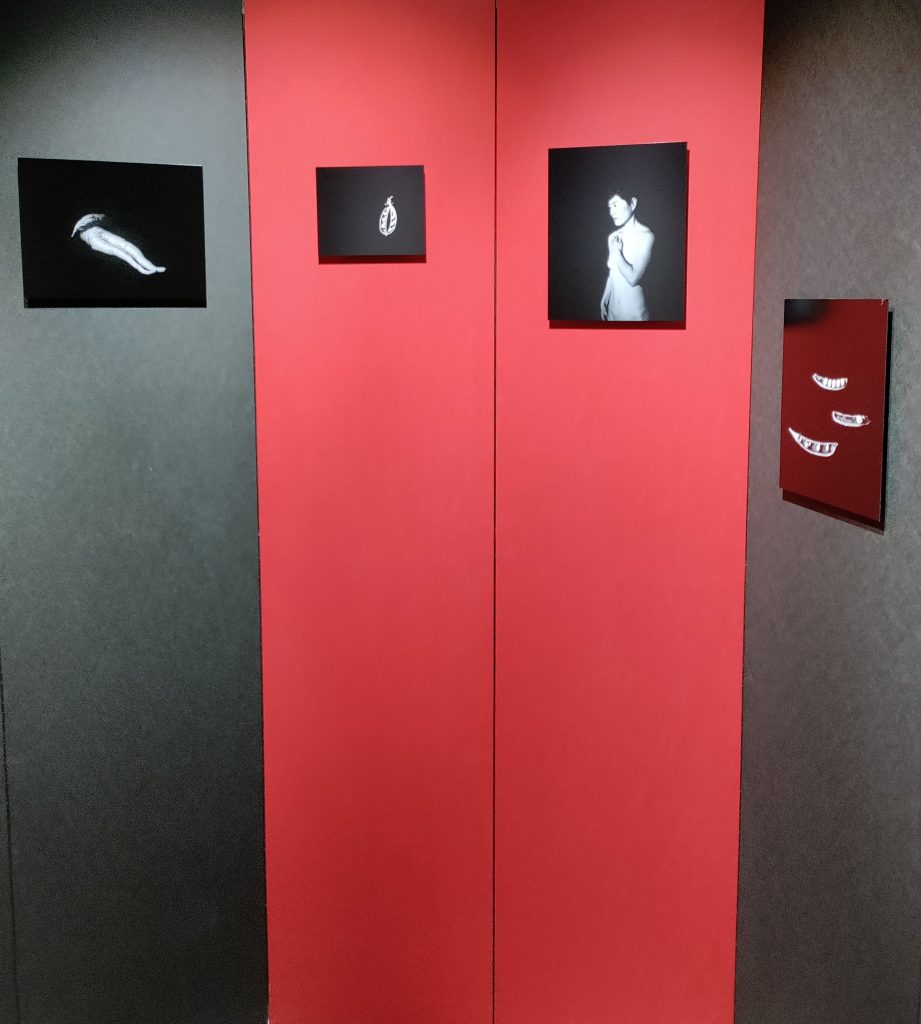
In the underground galleries of the cryptoporticos of Arles, French artist Sophie Calle (Paris, 1953), known for her conceptual works that poetically combine photography and writing, chooses to install the exhibition Neither give nor trow away. The space that hosts the exhibition, enveloped in a rarefied and shaded atmosphere, where faint rays of light projected through a few openings on the ancient underground walls dampened by water alternate, is an ideal place for the idea of her project conceived around many works from her storeroom, which have unfortunately deteriorated due to a storm that occurred shortly before the opening of her last exhibition at the Musée Picasso in Paris. Despite being advised by restorers to destroy the now damaged works, Sophie Calle decides not to deprive herself of them and to give them a transcendental life by burying them underground in Arles where they can continue to decompose. In addition to exhibiting some personal objects from which she cannot detach herself, the artist also exhibits some works from her series ‘The Blind’, consisting of black and white photographs of blind people to whom Sophie has posed a question: ‘what is beauty to you, if you cannot see it but can only imagine it?’ The portraits are thus combined with some archive images, new photographs and framed writings that narrate the vision of their imagination. The installation, as a whole, consists of a visual journey that aims to save and preserve the memory that may slowly, over time, fade away.

The retrospectives of Lee Friedlander titled Lee Friedlander framed by Joel Coen visitable at La Tour in the Parc des Ateliers and Mary Ellen Mark titled Encounters visitable at the Espace Van Gogh are alone worth the trip.

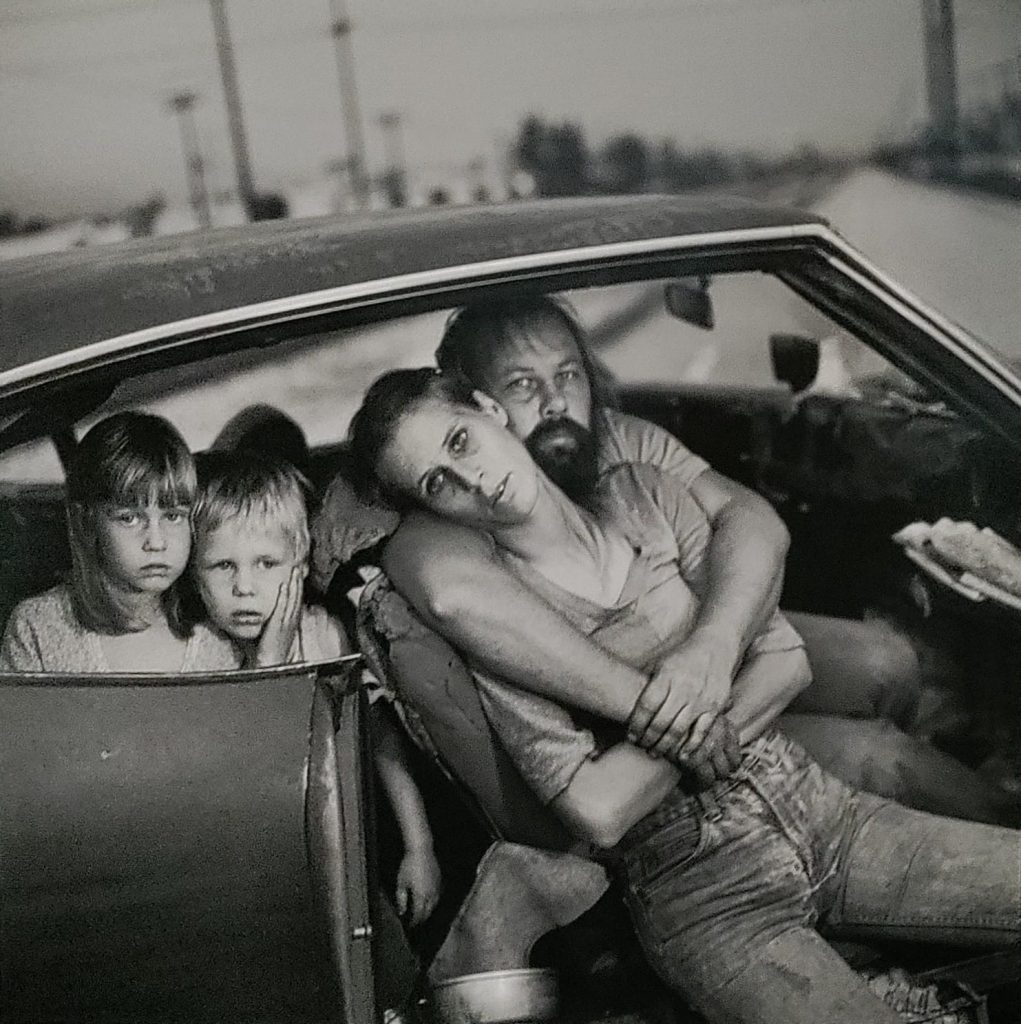
A note also on Cristina De Middel‘s installation Journey to the Centre, visible at the Eglise des Fréres Préscheus until 25 August, which well combined multiple expressive languages. The series took inspiration from the atmosphere of Jules Verne’s book Journey to the Centre of the Earth to present the Central American migration route through Mexico as a heroic and daring journey rather than an escape. With a language that combines direct documentary photography with constructed images and archive material, the narrative becomes multi-layered to complement the simplistic approach that the media and official accounts provide of the complex phenomenon that is migration.
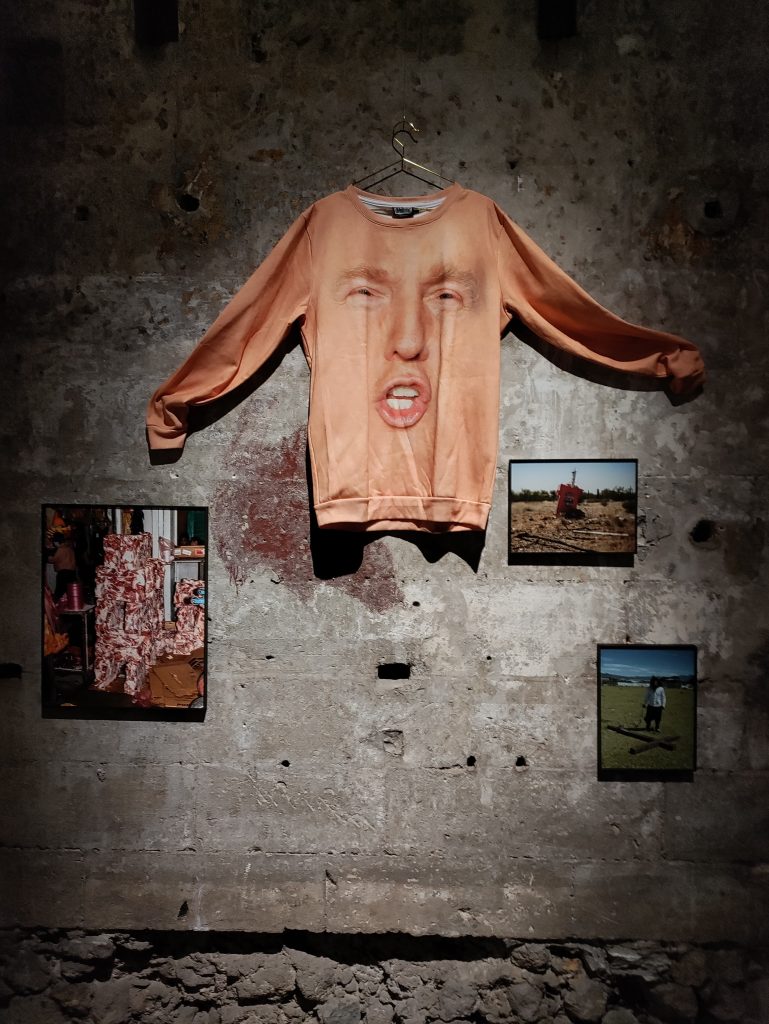
The Photolux Festival, in collaboration with the Kehrer publishing house, renews its presence in Arles by presenting the exhibition by Guido Gazzilli (Rome, 1983) entitled Home is home (All alone) curated by Klaus Kehrer and Enrico Stefanelli and exhibited at the Manuel Rivera-Ortiz Foundation. The exhibition is part of Commitment, a collateral programme of the Recontres d’Arles.
‘Home is Home (All Alone) is an illustrated diary and a long-term study. Stories of places and people in different worlds, in a society where I examine relationships, private moments, loneliness, abuse, love, nightlife, music and being an artist. I always explore the connection between certain people and their living space. (…) In my encounters and desperate search for a home, I have collected storms, dreams and gentle but sometimes icy winds. This collection of images bears witness to the search for a definition of identity and the inevitable realisation that we human beings are at once deeply connected to one another and yet fundamentally alone.’ With these words, the photographer describes his project, which is inspired by Gabriele Tinti’s verses on the Faun, the god of the woods and a Dionysian creature that has always been a symbol of creative plenitude, of the power of life that can turn into destruction and death. Through this work, the author shows us the search for his identity, for an imaginary place, his visual diary, related by the life stories of many people in relation to the place where they live, which can represent for him a refuge where he can finally find comfort.
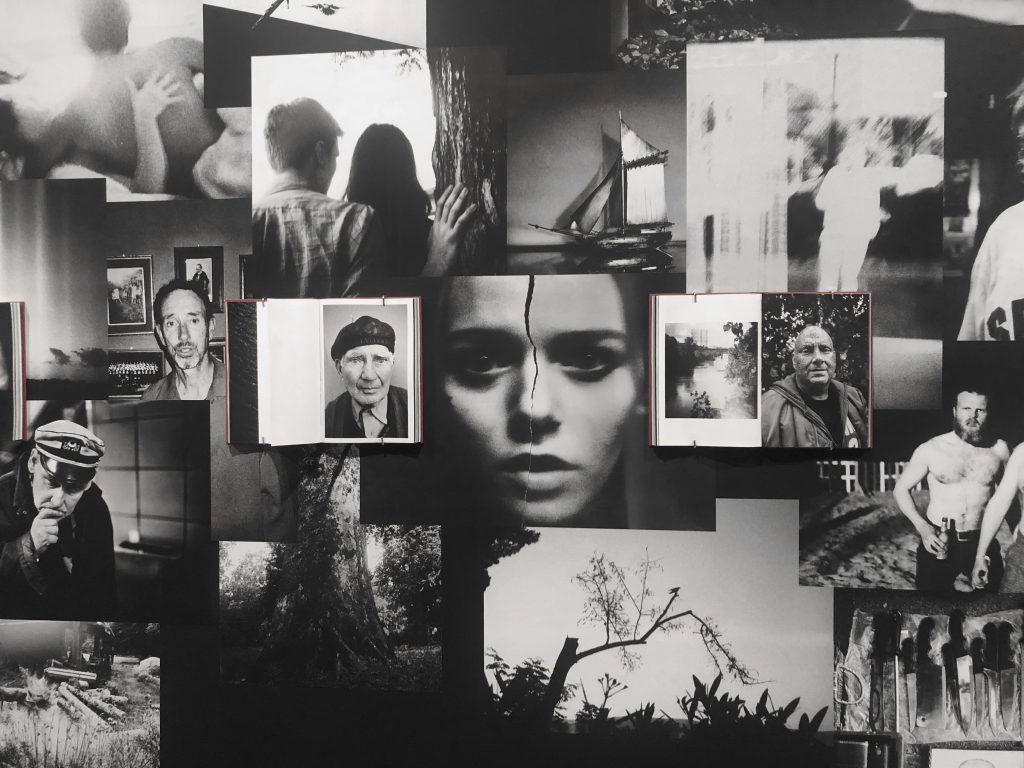
Arles Les Recontres De La Photographie
Below the surface
1 July_29 September 2024



